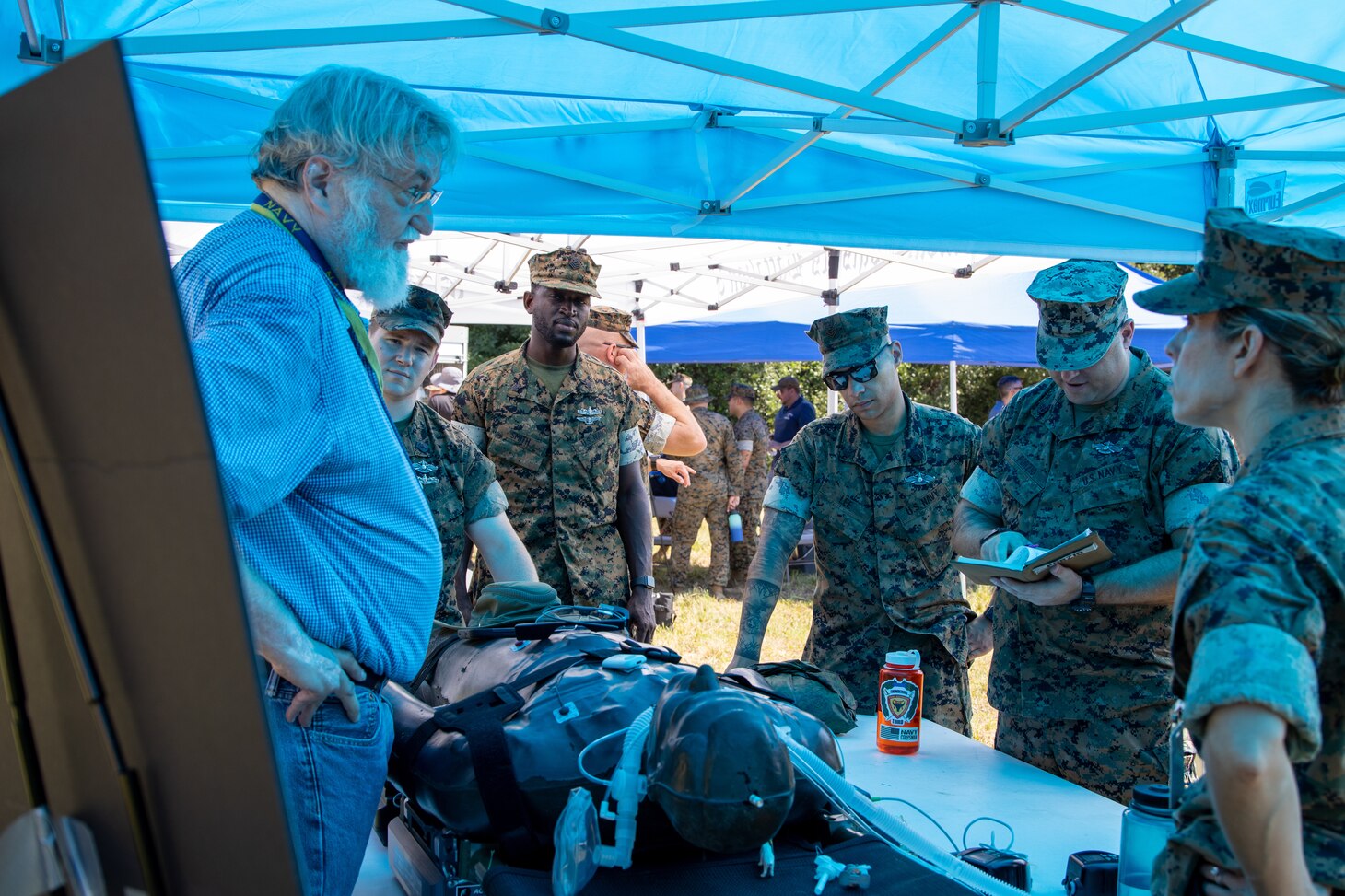
As an expeditionary force, Marines often fight in isolated and austere environments, requiring supply and logistical support over long distances.
To refine new technologies that enhance the Navy’s sustainment and expeditionary logistics, the Office of Naval Research (ONR) Global’s Experimentation and Analysis (E&A) Office recently conducted a two-week Technical Operations Experimental Exercise (TOEE) at Marine Corps Base Camp. ) sponsored 2022. Lejeune, North Carolina.
The purpose of the event is to take technology developed by ONR-supported scientists and engineers and put it into the hands of Marines and sailors for experimentation in realistic operational scenarios to see what works and what works. It was to seek feedback from combatants on what could be improved.
“It is important to prepare sailors and Marines for future operations with the technology and resources they need to succeed,” said Rear Adm. Lauryn Selby, Chief of Naval Research. “Exercises like TOEE 22 are important in determining what combatants need and whether the technology under development can deliver in an operational environment.”
ONR Global E&A, part of the Command’s International Division, provides decision-quality input to Naval Research Enterprise (NRE) leadership to support technology investment, further development, transition or divestment recommendations. increase. This includes building and maintaining relationships between Naval Operations Forces and the NRE to facilitate, fund, and conduct experimental efforts such as TOEE 22.
Other partners involved in TOEE 22 include the II Marine Expeditionary Force, which includes sub-elements of the 2nd Marine Division and the 2nd Marine Logistics Group. Naval Expeditionary Combat Command; Marine Corps Warfare Laboratory; A demonstration and evaluation team from the Naval Surface Warfare Center, Indian Head Division, Maryland. Multiple war centers.
“The purpose of this exercise is to bring technologies to combatants, see how they use them and get feedback, and consider the appropriate investments needed for future technologies,” he said. said Troy Hendricks, ONR Global E&A Director. “We are working with the Marine Corps to really learn how well these techniques work in relevant, real-world environments and give us avenues to improve them.”
Critical to the focus of TOEE 22 was conducting technology experiments along the lines of a new naval concept known as Expeditionary Advanced Base Operations (EABO). EABO involves deploying small but highly mobile forces in isolated locations. EABO has the potential to rapidly deploy forces to strategically important areas, and potentially to enemy arms engagement zones, in response to evolving threats when other U.S. military assets are unavailable. I’m here.
At TOEE 22, combatants such as infantrymen, logistics personnel, and medical personnel tested over 15 technologies in rugged and realistic operational conditions, including various landing zones in inland and coastal (coastal) locations. did. Tasks included supply operations, coastal transportation, equipment maintenance, engineering, and medical services.
Notable technologies included unmanned vehicles (quadcopters, boats, wheeled vehicles) that could refuel autonomously or remotely. Fluid analysis systems for testing oils, fuels and hydraulic fluids to determine equipment condition. A system that provides automated medical care to combat casualties awaiting evacuation.
“I am pleased that the Navy and Marines are advancing and coming up with new technology that is ahead of their game to make our lives easier and our jobs safer,” said Lance Cpl. exercise participant. Hunter topper.
Dillard Patton, ONR Global E&A Deputy Director, said: Our engineers learn in mud, sand and water to see where the gaps in technological development lie and make rapid improvements.
“For the Marine Corps, they will see early on what technology is coming down the pipeline and have the opportunity to try it out and build trust, providing a unique perspective as an end user.” he continued.
ONR Global Science Advisor Justin Helton, assigned to the 2nd Marine Expeditionary Force, commented: Scientists and engineers receive feedback on the system. Marines are exposed to technology and understand what it is, what it is and what they want. And together they drive demand signals for combatant needs. ”
Warren Duffie Jr. is a contractor for ONR Corporate Strategic Communications.
